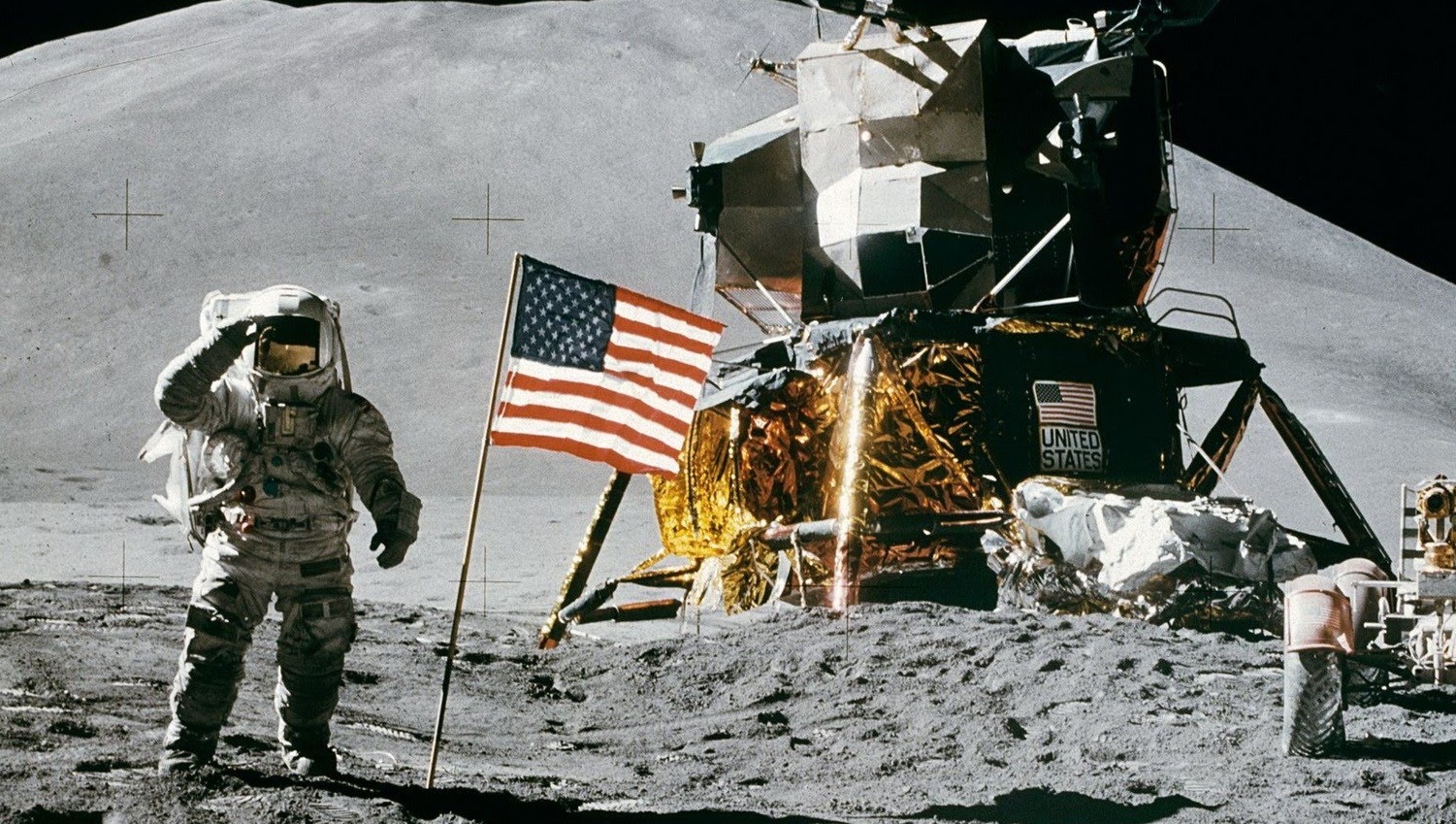The last man to walk on the moon was Eugene Cernan, an astronaut, on Apollo 17 in December, 1972. With him were Ronald Evans and Harrison (Jack) Schmitt. The documentary, written and directed by Mark Craig, is basically Cernan’s nostalgic recollections about his life, which he regards as extremely lucky and special to him. The film contains spectacular pictures from space. After all these years, it’s still a thrill for us to get close-ups of the earth and moon from an astronaut’s perspective: Earth’s rising above the moon’s horizon, sudden darkness or light depending on the location of the sun, astronauts “walking” in space attached only by a cord to the ship, and of course actually walking on the moon’s surface, which looks like hopping on a puffy cloud.
Cernan recalls that getting to participate in such feats was something far beyond his dreams. He grew up in Texas, but when he went to visit grandparents in Wisconsin and worked on their farm without electricity or tractor, he dreamed of being a rancher. He did get some inspirational advice from his father, who let him know he didn’t care what he chose to do with his life, but to “just do your best, and someday—I promise you—you’re going to surprise yourself.” And that he did—big time.
Cernan served in the Navy as a young man, and some of his personality traits that would make him an astronaut were already apparent; that is, he had feelings of invincibility and was competitive and a risk-taker. He found that he had a passion for flying, and mastered the trickiness of landing a plane on a carrier at sea.
When he was invited to apply to become an astronaut, he was incredulous, and went through rigorous training that included paper tests and tests of physical ability, testing his reactions to unknown situations, and desert/water/jungle survival training. He says that when Deke Slayton called him to inform him he had passed, his life changed forever.
It’s still a thrill for us to get close-ups of the earth and moon from an astronaut’s perspective.
Cernan was put in the Gemini Program in 1965, which involved orbiting earth in two-man capsules, so as to prepare them for moon flights. Being fitted for a space suit was a particular thrill, but he continually had doubts that he would actually be scheduled for a moon flight. He was on the back-up crew. Then fate had a hand in it when two astronauts (Charles Bassett and Elliot See) were killed in a plane crash during training, and the back-up crew, Cernan and Tom Stafford, were put in their place.
As they proceeded to go on a number of space missions, they found that risk is the price of progress when three astronauts died in a fire on a launch pad. Altogether, ten missions to the moon were planned originally, but this number was reduced to six after budget cuts and an explosion. Both Cernan and his wife at the time, Barbara, talk about the anxieties that were so common before flights, especially in view of previous accidents. Not just the launch, but the re-entry could be harrowing, given a speed of 24,791 miles per hour in one case. NASA was able to send Neil Armstrong to the moon in July, 1969.
Cernan’s dream of going to the moon was fulfilled at last on Apollo 17, the sixth and last lunar mission. He went up with Harrison (Jack) Schmitt and the two of them got out of the spacecraft and conducted experiments, gathered lunar samples and photographed the territory while a third, Ronald Evans, continued in lunar orbit. “It felt like I was living in a science fiction world spending those three days on the moon”, he says. Even now, he says he has to pinch himself, wondering at times, “Did it really happen?” and wondering what people are going to think about NASA’s accomplishments a thousand years from now.
This documentary directed by Mark Craig is a fine summary of just a sliver of the history of the U.S. space missions. It’s well worth reviewing by people who witnessed the televised missions to the moon in the 1960’s, and certainly should be shown in schools to younger people, whom Cernan hopes will be inspired by the wonders of science and technology. Just as important, perhaps, is an account of what the astronauts and their families experienced during this exciting time in America’s history.
An interview of Cernan conducted at the SXSW Film Festival on March 18, 2015, by Donna Copeland can be accessed at www.texasartfilm.com.
Final Thought
The last astronaut to walk on the moon and the wonder he still feels.

